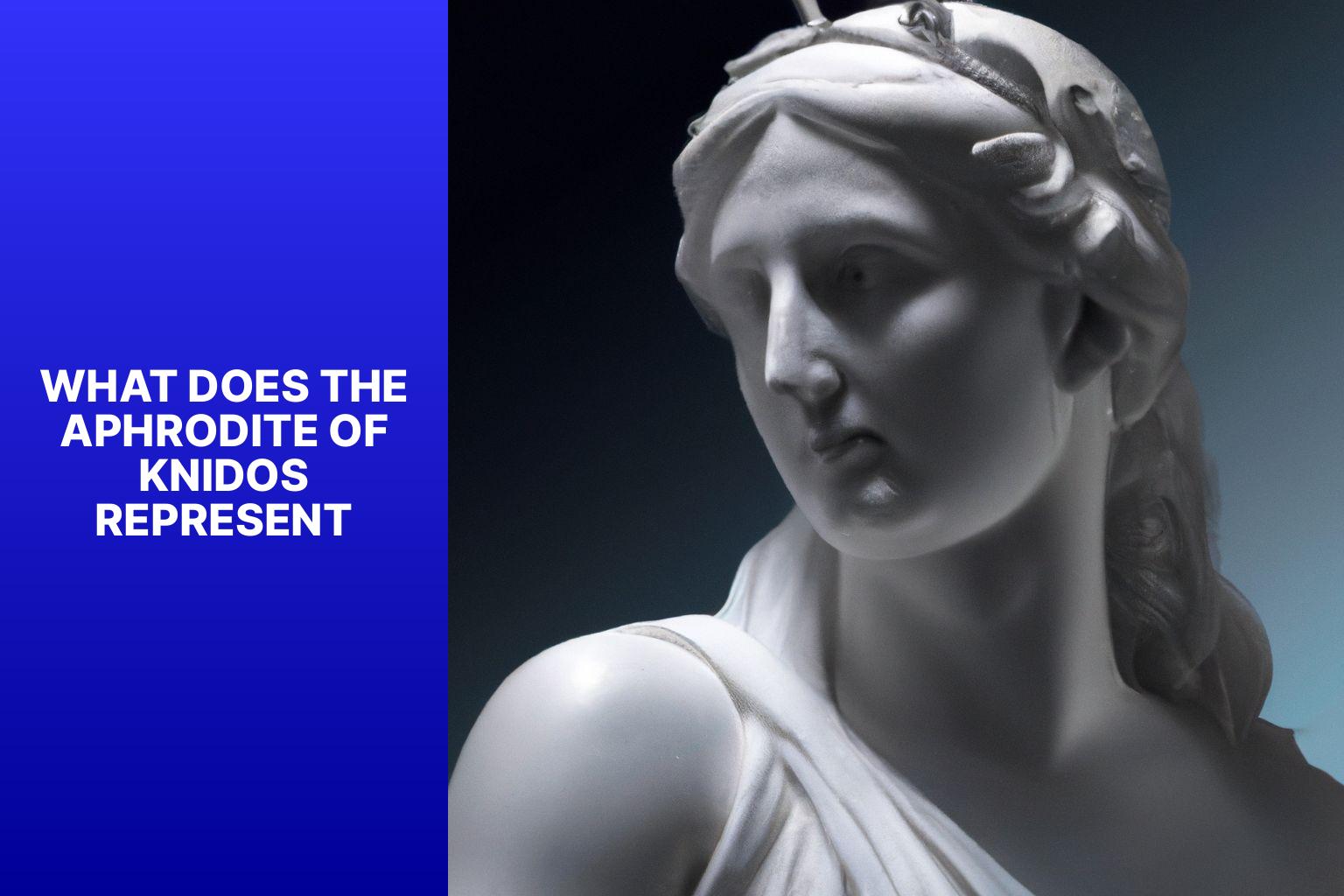What Does The Aphrodite Of Knidos Represent?
The Aphrodite of Knidos, an iconic sculpture, is a masterpiece crafted by the ancient Greek artist Praxiteles.
Unlike previous representations of the goddess Aphrodite as divine and untouchable, this sculpture portrays her in an unfamiliar, humanized form, marking a revolutionary departure from tradition.

The Profound Symbolism of the Aphrodite of Knidos
Praxiteles chose marble as his medium, using it to create lifelike textures and flowing drapery that accentuated Aphrodite's curves.
Historical Significance and Celebrity in Knidos
The Aphrodite of Knidos is not just a work of art; it carries profound symbolism. It invites contemplation of themes such as love, beauty, femininity, and desire, challenging traditional notions of gender roles.
The Fascinating History of the Aphrodite of Knidos
The history of the Aphrodite of Knidos is intriguing. Praxiteles, the renowned ancient Greek sculptor, created this symbol of beauty and sensuality in the 4th century BC. His daring decision to depict Aphrodite in the nude was a direct challenge to societal norms.
A Detailed Description of the Aphrodite of Knidos
The Aphrodite of Knidos is a renowned ancient Greek statue, standing at a height of 6 feet. Praxiteles' depiction of Aphrodite, the goddess of love and beauty, is graceful and sensuous, with explicit nudity.
Decoding the Symbolism and Meaning
The Aphrodite of Knidos is not just a representation; it's a symbol of love, beauty, and femininity. Its seductive pose, explicit nudity, and powerful representation of femininity challenge conventional norms.
Controversies and Reactions: The Aphrodite of Knidos in Its Time
In the ancient world, the unveiling of the Aphrodite of Knidos stirred controversy. Citizens flocked to see its sensuality and vulnerability, questioning societal standards of modesty.
Influence and Legacy: The Timeless Impact of the Aphrodite of Knidos
The legacy of the Aphrodite of Knidos is undeniable. As a masterpiece of ancient Greek art, it has shaped artistic conventions and served as a symbol of beauty and sensuality throughout history.
The Enduring Beauty of Aphrodite of Knidos
In conclusion, the Aphrodite of Knidos, crafted by Praxiteles, is a timeless masterpiece renowned for its beauty and sensuality. It challenges traditional notions of beauty and modesty, embodying the archetypal qualities of Aphrodite, the Greek goddess of love and beauty.
Frequently Asked Questions (FAQs)
Q: What is the Aphrodite of Knidos?
A: The Aphrodite of Knidos is a famous ancient Greek sculpture created by the sculptor Praxiteles. It depicts the goddess Aphrodite (Venus in Roman mythology) standing nude, which was a significant departure from traditional representations of the time.
Q: What does the Aphrodite of Knidos represent?
A: The Aphrodite of Knidos represents beauty, femininity, and love. It is seen as a celebration of the female form and has become an iconic symbol of beauty in Western art.
Q: Why is the Aphrodite of Knidos significant?
A: The Aphrodite of Knidos is significant because it was the first major sculpture in Western art to depict a female figure completely nude. It challenged traditional notions of modesty, revolutionizing the portrayal of the female body in art.
Q: Where can I see the Aphrodite of Knidos today?
A: The original Aphrodite of Knidos sculpture is currently lost, but there are many Roman marble copies and replicas that have survived. Some notable examples can be found in the Vatican Museums, the Louvre Museum, and the British Museum.
Q: What is the story behind the Aphrodite of Knidos?
A: According to ancient accounts, the sculpture caused a sensation in its time. It was commissioned for the city of Knidos, where it became a popular attraction.
Q: How does the Aphrodite of Knidos reflect Greek ideals of beauty?
A: The Aphrodite of Knidos reflects Greek ideals of beauty through its harmonious proportions, graceful pose, and idealized features. The sculpture embodies the concept of kalokagathia, the union of physical beauty and moral virtue, which was highly valued in ancient Greek society.

